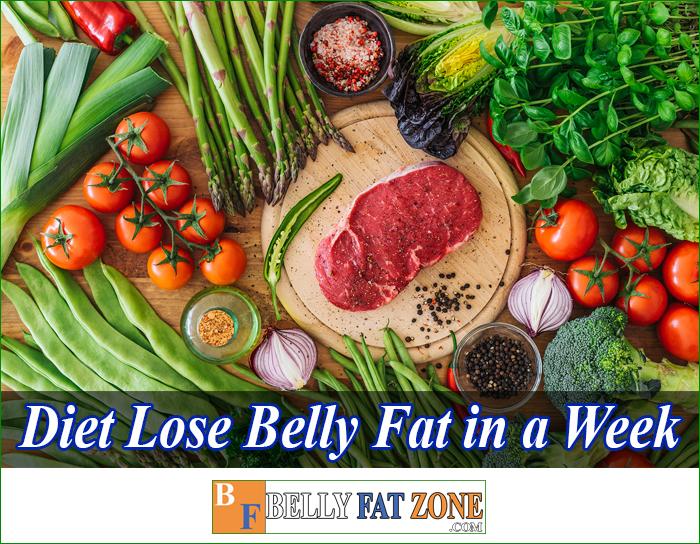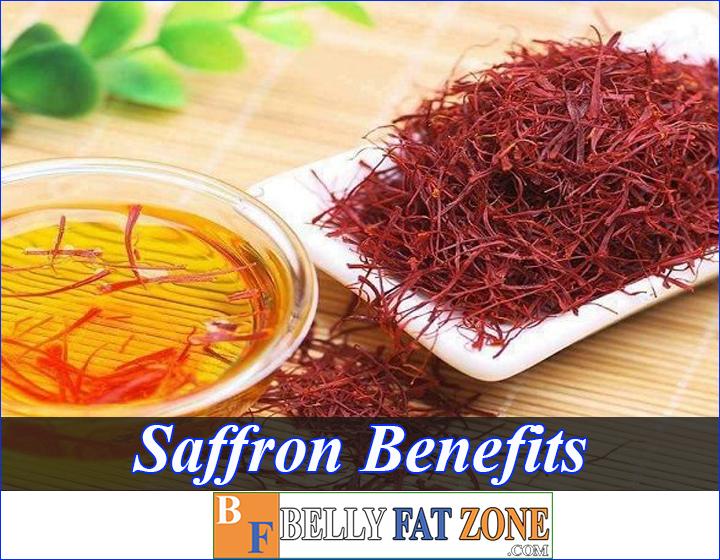How can eating fast food not become overweight or obese and one of them is eating pizza. So how to eat pizza without getting fat?
For foodies, pizza is always one of the most irresistible favorites, but in terms of nutrition, it is unhealthy fast food, like hamburgers and fries.
So is there a way to make the pizza healthier and still delicious? Let's explore with Belly Fat Zone!
There's nothing better than enjoying a weekend evening with a delicious cheese pizza or sipping it on the first morning of the week to kick-start a refreshing spirit for the working days. No matter what time you want to eat, pizza can be the ideal choice.
Pizza is a favorite food of many people, even though we all know it is not good for health. However, in fact, you can change that, turning pizza into a healthy and nutritious meal by choosing more reasonable ingredients.

Basically, pizza is high in carbohydrates from the crust, protein from the cheese and meat, and fat from the toppings and cheese. This is a dish full of energy and flavor that easily conquers all diners from young to old.
Nutritionist Amy Kimberlain, the spokesperson for the Institute of Nutrition and Dietetics in Miami (USA), said: “People often think that pizza may not be the healthiest option, as it is often thought to be High in sodium, calories and saturated fat. However, not every slice of pizza is the same.”

According to Kimberlain, it's important to pay attention to crust composition, toppings, and even toppings when you enjoy pizza. “Just like with any other food, what matters is how you prepare it,” says nutritionist Angela Lemond of Texas (USA).
For example, if you buy a 12-inch pan-fried pepperoni pizza, you'll load yourself with 286 calories, nearly 14 g of fat (including 5 g of saturated fat), and more than 29 g of carbohydrates per slice.
According to data from the United States Department of Agriculture (USDA). And often we rarely stop at one piece, ie the numbers above will multiply much more.
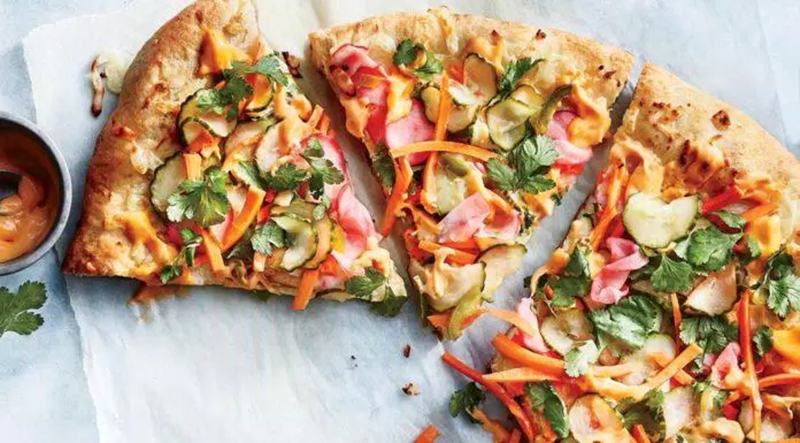
To maintain an ideal weight and a healthy heart, if you're on a 2,000-calorie-a-day diet, limit saturated fat to 16 to 22 grams per day, according to MedlinePlus. That means a slice of pizza already contains almost a third of your daily limit.
That's why more and more people want to make their own pizza at home. “There are so many different ways pizza can be healthy. First, by making it at home, you'll have maximum control over how it's made – and that's the first step,” says Kimberlain.
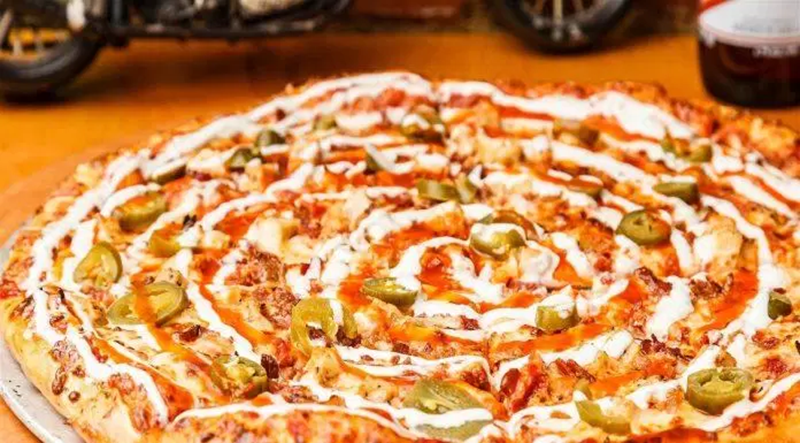
So specifically, what are the ways to make your favorite pizza healthier, so that you can enjoy your pie without any guilt or anxiety? Let's find out now!
1. Add more vegetables to pizza to increase nutrients
You should consider pizza as a dish to increase the number of vegetables in your daily diet. Vegetables are rich in vitamins, minerals and healthy fiber.
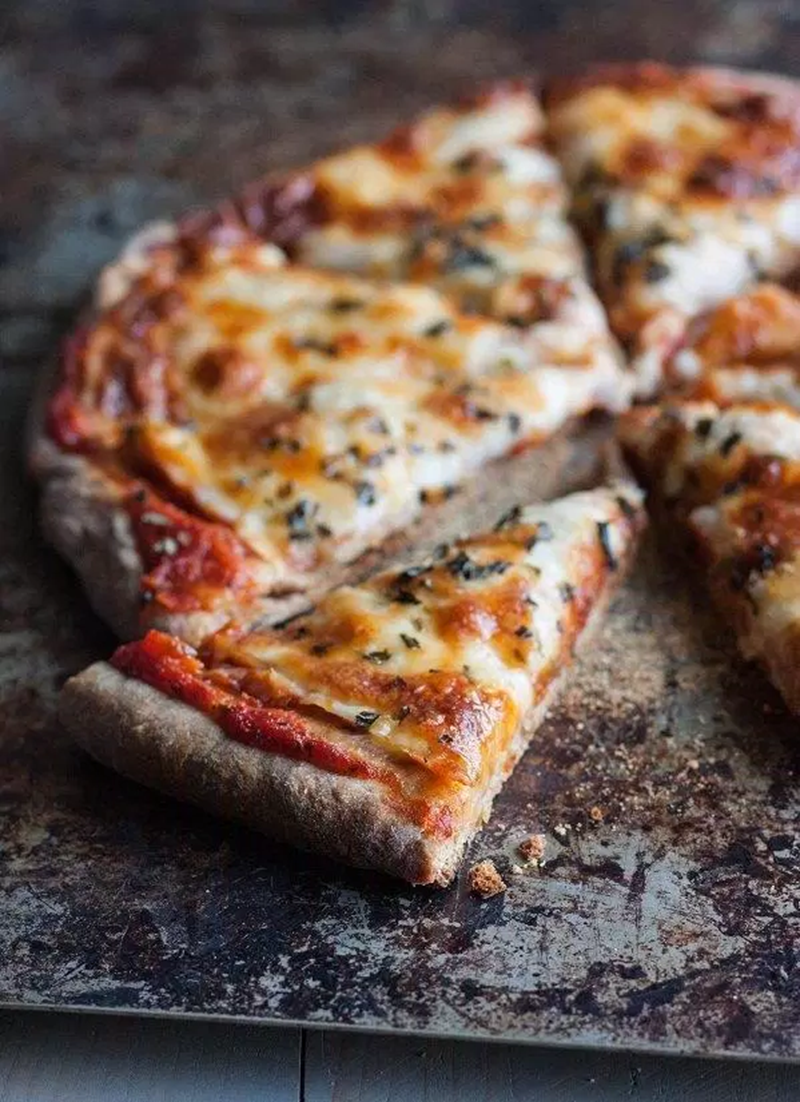
But you do not know which vegetables to choose the most suitable for the cake? Try Kimberlain's favorite combination: “For a traditional red pizza, I like to add all the vegetables – tomatoes, peppers, onions, mushrooms, artichokes, olives, basil cinnamon”. This way, you will get a meal full of essential nutrients for your body.
Mushrooms are an excellent source of vitamin B3 (niacin), according to Harvard University and the USDA. One cup of raw mushrooms provides 3 mg of vitamin B3, which is 21% of the body's daily requirement. This versatile vitamin helps keep your digestive system, skin, and nervous system healthy.
In addition, bell peppers are a good source of fiber: 1 cup of bell peppers contains more than 3 grams of fiber, according to the USDA, or nearly 11% of the daily requirement.
Fiber keeps you full for longer and maintains the health of the digestive system. One cup of bell peppers also provides you with 190 mg of vitamin C, which is 211% of the daily requirement. So add more vegetables to have a cake full of vitamins.
2. Choose thin-crust pizza to reduce calorie intake
Whether you order it from outside or make your own pizza at home, choose the thin crust type. “The thin crust means you can eat more veggies before you're full,” says Lemond.
By choosing a thin-crust pie, you'll be eating mostly the veggies instead of the crust. A more plant-based diet will help with overall health.
For example, a study published in August 2019 in the Journal of the American Heart Association found that people with a predominantly plant-based diet — focusing on vegetables, nuts, whole grains, fruits, and legumes – have lower rates of death from heart attacks, strokes and other heart-related diseases than people who eat more animal-based foods.

The thin crust also offers many other benefits, such as reducing your total calorie and sodium intake. According to the USDA, a slice of thin-crust pizza without cheese contains 141 calories and 282 mg of sodium.
Meanwhile, a slice of cheeseless thick crust pizza contains up to 239 calories and 422 mg of sodium.
3. Pay attention to the type of cheese to reduce the amount of saturated fat
Most pizza lovers will say that cheese is an integral part of a delicious pie. However, it is important here to choose the right type of cheese for your cake.
Cheese is a good source of protein and calcium, says Kimberlain, but be mindful of how much cheese you put in because it also contains saturated fat. Choose partially skim mozzarella or skim ricotta cheese.
Here are the nutrition facts for cheeses that typically contain less fat than whole cheeses, according to the USDA.
Partially skimmed mozzarella cheese
1 ounce (about 28.3 grams) contains:
- 72 calories
- 4.51 g total fat
- 2.87 g saturated fat
- 222 mg of calcium, accounting for 17% of daily needs
Meanwhile, an equal amount of full-cream mozzarella cheese contains 85 calories, 6 g total fat, 4 g saturated fat and 143 mg calcium.
Partially skimmed ricotta cheese
In 1 ounce contains:
- 39.1 calories
- 2.24 g total fat
- 1.4 g saturated fat
- 77.1 mg of calcium, about 6% of daily needs
Meanwhile, an equal amount of whole ricotta cheese contains about 50 calories, 4 g total fat, 2 g saturated fat, and 72 mg calcium.
“My current favorite pizza recipe is topping the vegetables on top of ricotta cheese, then grilling,” expert Lemond tells fans of ricotta cheese on pizza.
4. Choose a whole wheat crust or a vegetable crust
When choosing the crust, you don't just need to consider the thickness or thinness as mentioned above. According to expert Kimberlain, if you can make the crust with whole grains, you will add more fiber to your cake.
According to the USDA, a whole-wheat thin-crust pizza with cheese contains more than 3 grams of fiber. Meanwhile, a small regular thin crust pizza with lots of cheese contains only 1.5 g of fiber. Thus, whole-wheat pie crust contains up to 11% of your daily fiber needs, compared to just 5% in a regular crust.
The vegetarian crust is also a suitable option. Opt for commercially available alternative pizza crusts or make your own with vegetables like cauliflower, broccoli, and beets. You can eat them with a traditional crust to increase the number of vegetables.
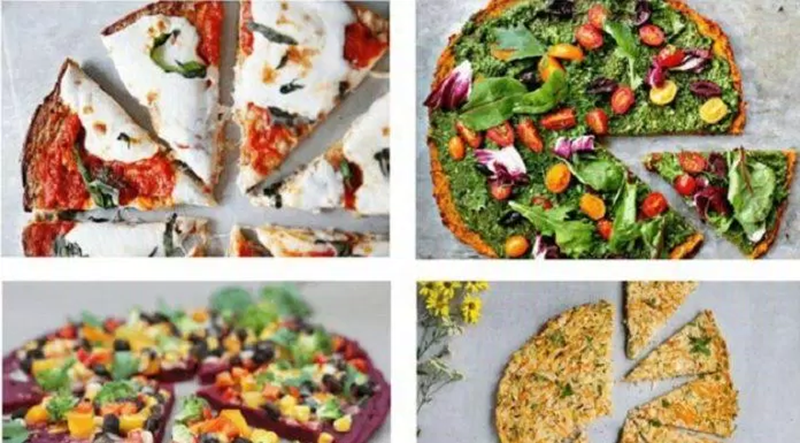
Vegetable crusts are high in fiber and low in carbs, for example, frozen cauliflower crust contains about 3 g of carbohydrates and nearly 1 g of fiber per slice, according to the USDA.
You'll also get other nutrients from the cauliflower skin, such as 9 g of protein (partly because the recipe also includes eggs).
5. Choose lean protein sources like chicken instead of high-sodium and high-fat sausages
Cheese helps your pizza already have protein, but many people still want to get more protein from other sources, so be mindful of the ingredients you put on your pie.
Nutritionists recommend avoiding fatty meats and instead of going for lean meats like chicken breast, seafood, or plant-based protein. According to current recommendations, you should limit your intake of processed meats like bacon, hot dogs, and pepperoni, which are high in sodium and saturated fat.
6. Choose red sauce for extra nutrients
The red sauce makes pizza taste delicious and also provides essential nutrients. Traditional red sauce is packed with vitamins A and C along with the antioxidant lycopene.
For example, ¼ cup of tomato-based sauce provides you with more than 7 mg of vitamin C, or about 7.8% of your daily requirement, as well as 21 micrograms of vitamin A, about 2% of your daily requirement, according to the USDA.
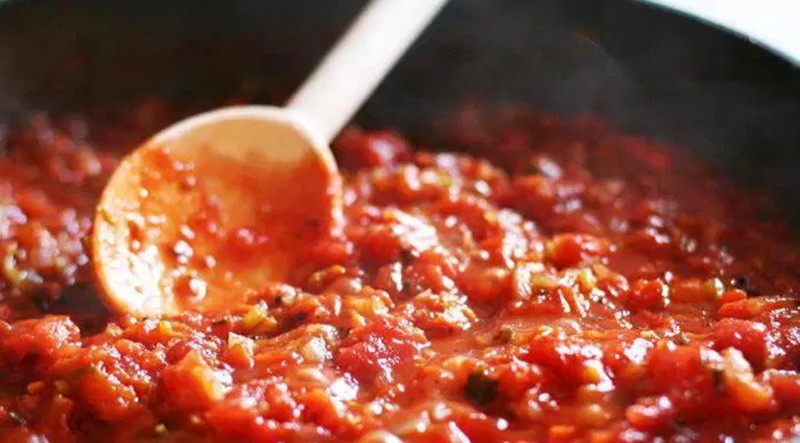
Vitamin A plays a very important role in many functions in the body, from improving eyesight to maintaining an effective immune system.
In addition, lycopene is an antioxidant that gives fruits and vegetables their red color and has been linked to a reduced incidence of certain cancers as well as a reduced risk of stroke.
Red sauces are a better choice than cream sauces, such as Alfredo sauces, which are high in saturated fat and sodium. Although this sauce can be included in a healthy diet in moderation, in practice pizza makers often put sauces and toppings on cakes in an uncontrolled manner.

If you're not a fan of red sauce, there are other options. According to expert Kimberlain, you can use pesto sauce made with heart-healthy nuts and oils. Pesto is made with pine nuts (or you can also substitute with almonds or walnuts), and the nuts have many health benefits such as lowering LDL cholesterol or strengthening blood vessel walls.
Pesto is also made with olive oil, which may reduce the risk of heart disease. The pesto sauce also has a basil flavor and is rich, just a small amount is enough to make the cake so much more delicious.
7. Choose healthy side dishes to enjoy with the cake
Eating pizza is not only enjoying the pizza, but the side dishes also make an important contribution to making a delicious and quality meal, balanced overall.
You can try vegetable appetizers, such as sipping pre-cut vegetables before eating pizza like cauliflower, cucumber and carrots, combined with a yogurt-based dipping sauce.
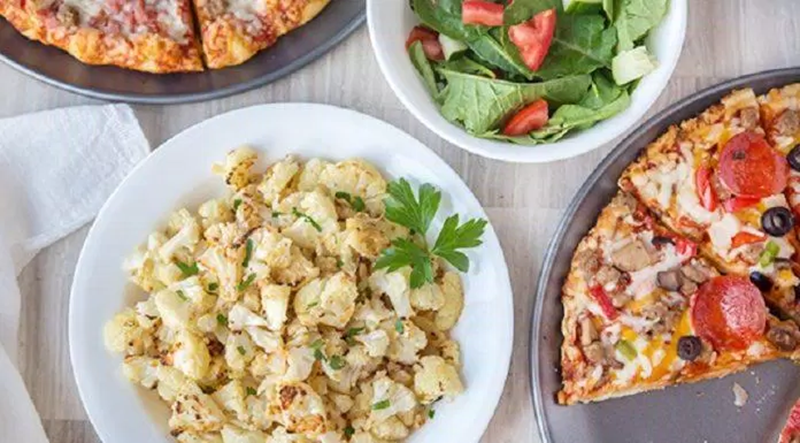
When it's time to eat pizza, you can enjoy thin-crust slices with a side salad. Eat plenty of vegetables that provide fiber and make you feel fuller, for example, 1 cup of raw kale provides 1 g of fiber, according to the USDA.
Try adding a few other veggies on tops like sliced carrots and cucumbers, then mix with a dressing made with lemon juice, olive oil and a pinch of salt, and you've got a filling meal squishy and delicious.
8. Eat slowly to enjoy your favorite flavors
Besides the ingredients in the cake, your eating speed also affects a lot. Really enjoy the taste of the food, instead of devouring it all in a moment. When you eat slowly, you will realize when you are full and not fall into a state of overeating.
Also, don't forget to enjoy the fun atmosphere with your loved ones. Scientific studies have shown that friendship, social connection and family affection have many benefits for our health.
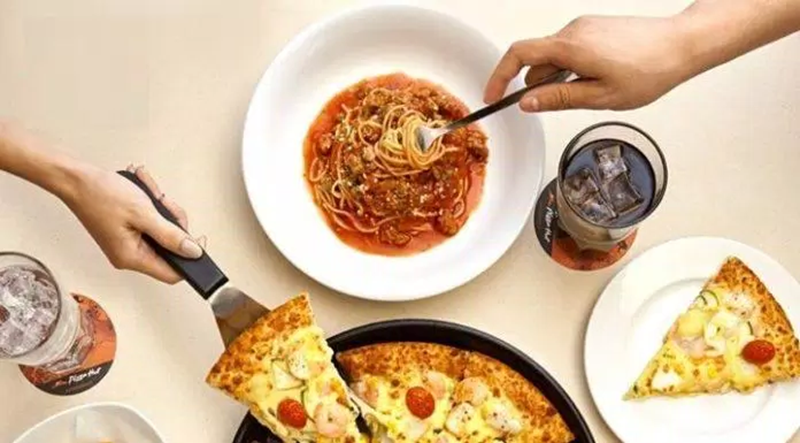
According to Harvard University, strong relationships and social connections can improve health and increase life expectancy. Another study in the International Journal of Environmental Research and Public Health found that social connections improve the happiness levels of people with chronic health problems.

Conclude:
It all depends on how you act and treat the situation around you, when you are happy, you see everything around you as happy and vice versa, when you are bored, you will find everything around you boring.
Same with food, you change the way you eat and change the ingredients or simply pay more attention to the amount of energy you take in each day to help you control your weight easily without worrying about being fat, or overweight.
View more:
- Benefits of Casein Protein Powder and How to Use it Effectively
- Diarrhea After Whey Protein Shake – How to Treat a Lactose Intolerance?
- Effects Of Sweet Potatoes – Should We Eat A Lot Of Sweet Potatoes?
The bottom line is that we see the big picture and the small actions to satisfy that big picture, the same goes for pizza or any cake.
